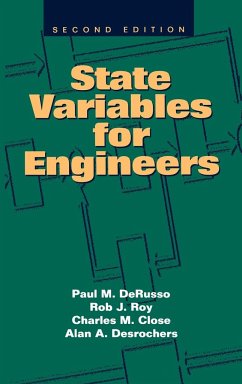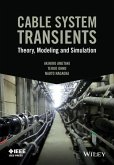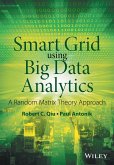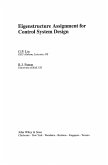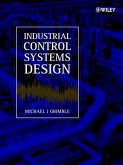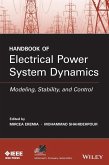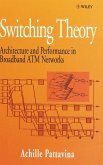Physikalische Systeme werden gewöhnlich durch Modelle dargestellt, die aus idealisierten Komponenten bestehen, die man mathematisch exakt definieren kann. Dieses Buch behandelt eine Reihe verschiedener Anwendungsmöglichkeiten dieser mathematischen Charakteristika oder Modelle. Es ist gedacht für Akademiker, die sich im Bereich Elektrotechnik (Lineare Systeme, Systemtheorie, Moderne Steuerungstheorie) weiterbilden wollen. Diese Neuauflage trägt den bedeutenden Veränderungen der vergangenen 30 Jahre Rechnung. Bestimmte Themen, die im Studium behandelt werden, wie z.B. Transformationstechniken, einschließlich Fourier, Laplace und Z-Transformationen, wurden hier ausgespart. Lediglich Z-Transformationen werden in Appendix II behandelt. Die Grundlagen der Matrixalgebra werden zwar in Appendix I besprochen, jedoch werden gute Kenntnisse in diesem Bereich vorausgesetzt. Ein Lösungsschlüssel ist beigefügt. The classic text, now completely up to date
This Second Edition of State Variables for Engineers is completely updated to reflect both the many changes in the field of systems and control and the fact that today s first-year graduate students are well prepared in the background skills and techniques needed to handle this material. The book begins with an introduction to the basic concepts behind time domain techniques, comparisons between state variable feedback and classical output feedback, and a discussion of the concepts of observability and controllability.
The authors stress the importance of studying matrices and linear spaces by offering state variable representations for continuous linear systems in matrix form along with the solution to the resulting linear matrix differential equation. This treatment demonstrates how these basic linear algebra tools are related to the state variable analysis of linear systems.
This new edition retains thorough coverage of the eigenvalue-eigenvector problem from the first edition, as well as several chapters on state variables for continuous and discrete-time systems--now supplemented with additional material on observability and controllability. It also offers three entirely new chapters covering:
Canonical forms for representing linear systems
Observers and controllers
Identification and estimation
Supplemented with appendices on basic matrix algebra and Z transforms, State Variables for Engineers, Second Edition is the ideal text for courses in systems analysis and techniques. It is also an excellent reference for professionals who want to keep pace with recent changes in the field.
This Second Edition of State Variables for Engineers is completely updated to reflect both the many changes in the field of systems and control and the fact that today s first-year graduate students are well prepared in the background skills and techniques needed to handle this material. The book begins with an introduction to the basic concepts behind time domain techniques, comparisons between state variable feedback and classical output feedback, and a discussion of the concepts of observability and controllability.
The authors stress the importance of studying matrices and linear spaces by offering state variable representations for continuous linear systems in matrix form along with the solution to the resulting linear matrix differential equation. This treatment demonstrates how these basic linear algebra tools are related to the state variable analysis of linear systems.
This new edition retains thorough coverage of the eigenvalue-eigenvector problem from the first edition, as well as several chapters on state variables for continuous and discrete-time systems--now supplemented with additional material on observability and controllability. It also offers three entirely new chapters covering:
Canonical forms for representing linear systems
Observers and controllers
Identification and estimation
Supplemented with appendices on basic matrix algebra and Z transforms, State Variables for Engineers, Second Edition is the ideal text for courses in systems analysis and techniques. It is also an excellent reference for professionals who want to keep pace with recent changes in the field.

